Best “Tape Measure” Brand?
BRANDS TESTED: Milwaukee, DeWalt, Stanley, Craftsman, Klein, Kobalt, Lufkin, Bauer, Komelon, Kutir, and Ming Hao
Tape measures tested for standout (reach), abrasion resistance, impact, retraction speed after exposure to sawdust and sand, magnet strength, and blade lock strength. I always purchase all of the products I test and the supplies used for testing products to ensure unbiased and fair test results.
Short Story
| The Best, but no magnet | Good overall | Good allrounder | Affordable |
|---|---|---|---|
 |  |  |  |
| DeWalt | Craftsman | Stanley | Kobalt affordable |
Long Story
Growing up, my father used tape measures five to six days a week on construction sites. And they didn’t seem to last since then. There’s been a lot of improvements made to tape measures. We have a whole bunch of different brands that test today. So let’s get the testing underway and see which brand comes out on top.
And the first test, we’ll see which brand stands out best. Then we’ll see which brand offers the best wear protection. Then we’ll find out which brand has the strongest magnet. And finally, we’ll see which brands can survive an impact at only $7.
Bauer makes the least expensive brand that will be tested. All the tape measures 25 feet and is durable and economical case design. Who will try that push-button blade return, protective nylon blade, and coating lifetime warranty? The Bauer is made in China.
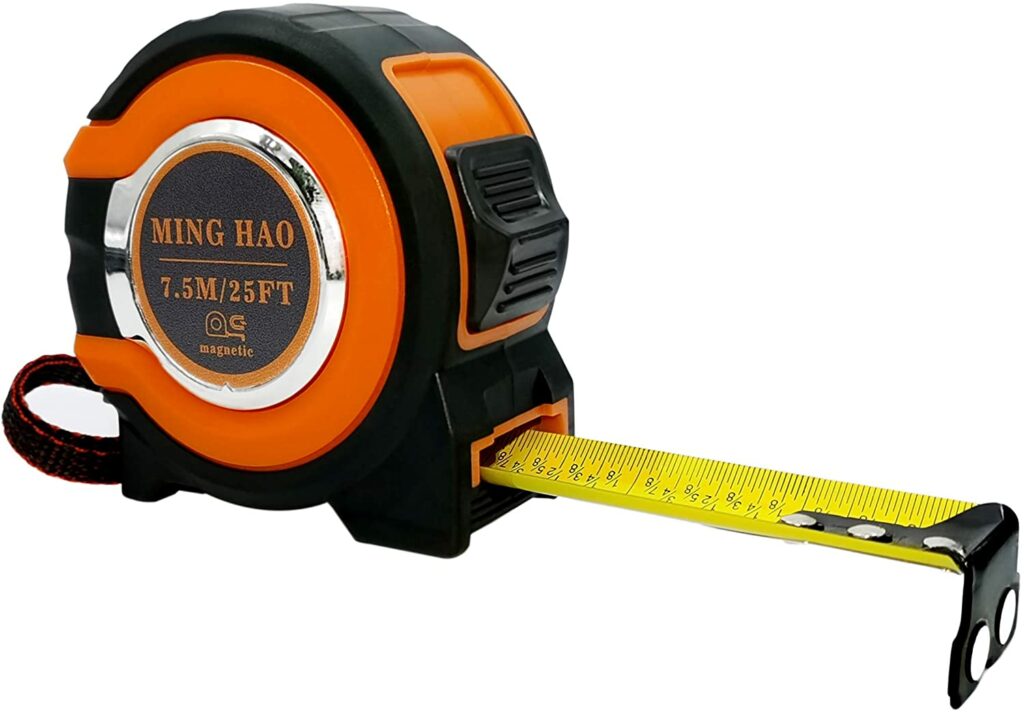
The hook of secured in three spots. We’ll probably do a lot of damage to these tape measures, so I bought three. If each of you works alone a lot, the distance you can extend the end of the tape measure can make a huge difference. Let’s see which tape measure stands out best in the next test. Some manufacturers no longer mention standout to help sell more tape measures.
Instead, they mention reaching, which is the standout, plus three feet. The distance of a person’s arms with a tape measure placed on a flat table. That’s up to a 7-degree difference among the brands. So I put together this simple test jig to set an angle at 16.5 degrees.
A bearing is located 10 inches from the front of the tester to apply pressure on the tape consistently from one brand to the next. Let’s test the Bauer first with a blade thickness of 0.15 millimeters. The Bauer blade is much thinner than other brands, impacting how far it’ll look extended.
At 84 inches and suitable at seven feet, the Bauer is at a price of only $10. Ming Hao makes the second least expensive brand that will be tested. Hao makes the second least costly brand that will be trying Hao makes the second least expensive brand that will be tested.
Ming Hao makes the second least costly brand that will be tested. Ming Hao makes the second least expensive brand that will be tested—the brand clues to be solid and durable. The measuring tape’s casing is made of top-grade rubberized material, easy-to-read fractions, and the Ming Hao, including a blade lock and a break.
The end of the tape measure is outfitted with a powerful magnet. The Ming Hao brand does not claim to have any protective coating. The Ming Hao is made in China. And the Bauer has a standout of 84 inches. And the blade thickness and width are nearly the same as the Ming Hao 89 inches. So the Ming Hao takes the lead from the Bauer.
And at a price of only $15, the third expensive brand that will be tested is made by Kobalt’s 90-day satisfaction guarantee—high this double-sided blade with durable nylon coating, printed, fractional graduations, and magnetic hook. The hook is secured in four areas. Product Korea assembled in China, and the Kobalt blade is slightly thicker and more comprehensive than the Bauer and the Ming Hao.
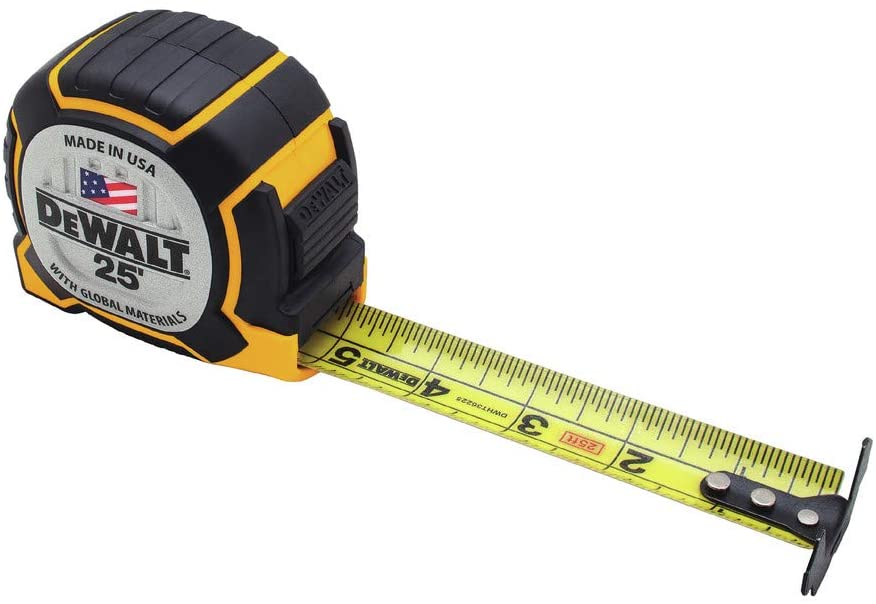
92 Inches for the Kobalt also costs $15. The exact price as the Kobalt is this Komelon brand, magnetic hook nylon coated blade printed on both sides of the blade. Unlike the previous three brands, this one has a double turn. The Komelon is made in China.
The Komelon has the same blade thickness and width as the Ming Hao brand, 82.5 inches for the Komelon at only $16. This Kutir brand has five times stronger accidental drop protection with a shock-absorbent case. It claims to have seven feet of standout, easy-to-read, bold numbers—double-sided ruler magnetic hook. There’s a hook above and below the tape measure.
The theme is secured in three spots. The Kutir brand is made in China. The Kutir brand claims to have 84 inches of standout, and it did better than advertised at 90.5 inches. But Kobalt holds onto the lead for $23.
Is this client tools brand double hook magnetic tape measure? It has a tough blade, 13-foot standout, easy-to-read bold lines, and heavy-duty nylon coating for more extended blade life retraction break for speed control and finger protection. The edge is secured in four spots.
The client tools bring and are made in China, and the Klein brand claims to deliver 156 inches of standout. And the Klein brand did better than advertised at 167.5 inches and moves into the lead. Also, the price of $23, the same as the Klein brand, is Stanley Fat Max magnetic hook end ten times the blade life.
The blade armor coating protects the first four and three-quarters inches. The Stanley fat max blade is secured at 14 feet of reach in three locations. The Stanley is made in the USA with global materials, and the Stanley Fat Max claims 168 inches of space or 132 inches of sand.
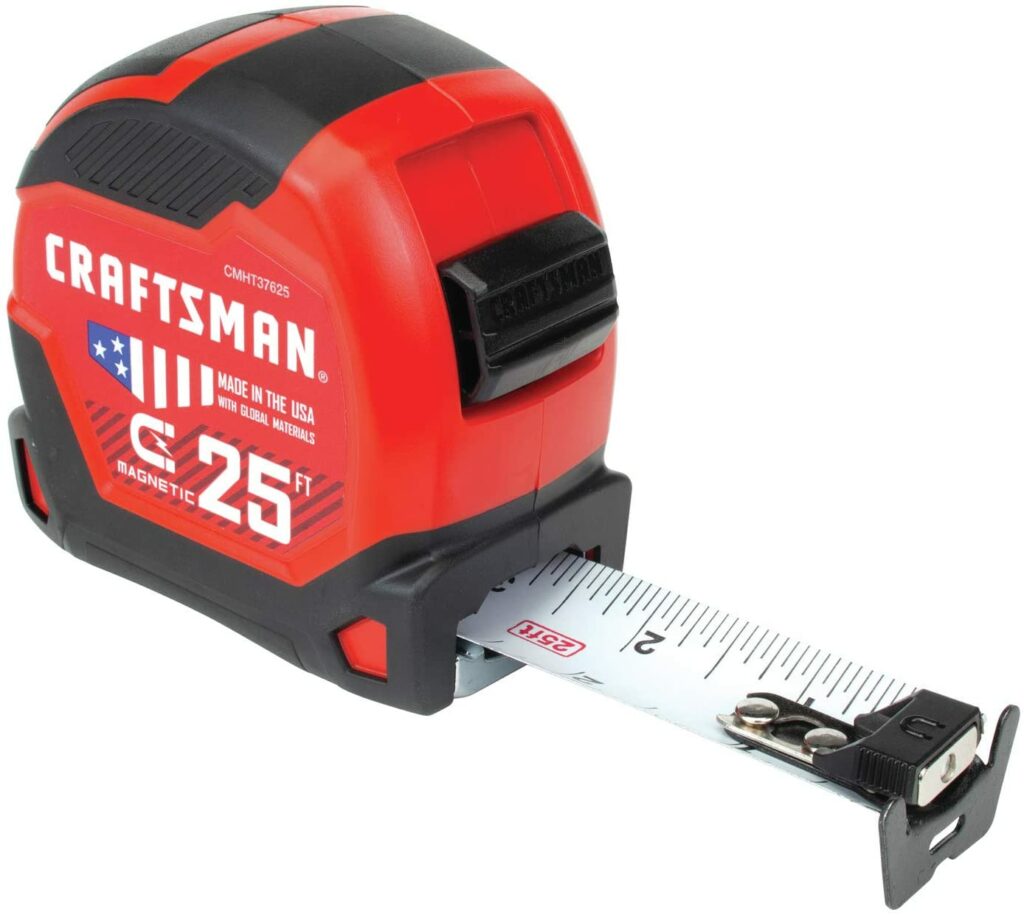
The Stanley tape measure came up short at only 127 inches of standout. For $2 more than the Stanley fat max or $25. Is this Craftsman brand 16 feet of reach, extra durable? With a blade coating and a magnetic hook. The first three inches of the blade have a layer.
The theme is secured in three locations, made in the USA with global materials. The Craftsman claims an imposing 192 inches of reach or 156 inches of standout, 154 inches. So the Craftsman came up two inches short of meeting its rating at the same price as the Craftsman at $2,5 this Lufkin brand.
All the other brands are 25-foot tape measures. The Lufkin is a 26-foot, 12-foot standout with fingertip control, a durable coat, three times a lifetime warranty, versatile 360 degrees, and a hook. The hook is secured in four locations. The Lufkin is designed, engineered, and tested in the USA but made in China.
Standard as well as metric. The Lufkin claims 144 inches of standout or 180 inches of reach. And the Lufkin came up 12 inches short at 132 inches. For $28, the second most expensive brand will be tested and made by Milwaukee magnetic hook wire form belt, clip fingers, and stop nylon blade protection.
The end hook is secured in four locations up to nine feet of standout, five-point reinforced frame. The Milwaukee is made in China, and the Milwaukee only claims a beauty of 108 inches and performs better than advertised at 121 inches of standout. And the most expensive brand will be testing at $33. Is this DeWalt brand 13 feet of beauty, extended performance, and lifetime warranty?
Our toughest blade coat is guaranteed tough. The first nine inches of the tape measure has the coating survive a 60-foot drop new quick-release lock design. The DeWalt does not have a magnetic end hook.
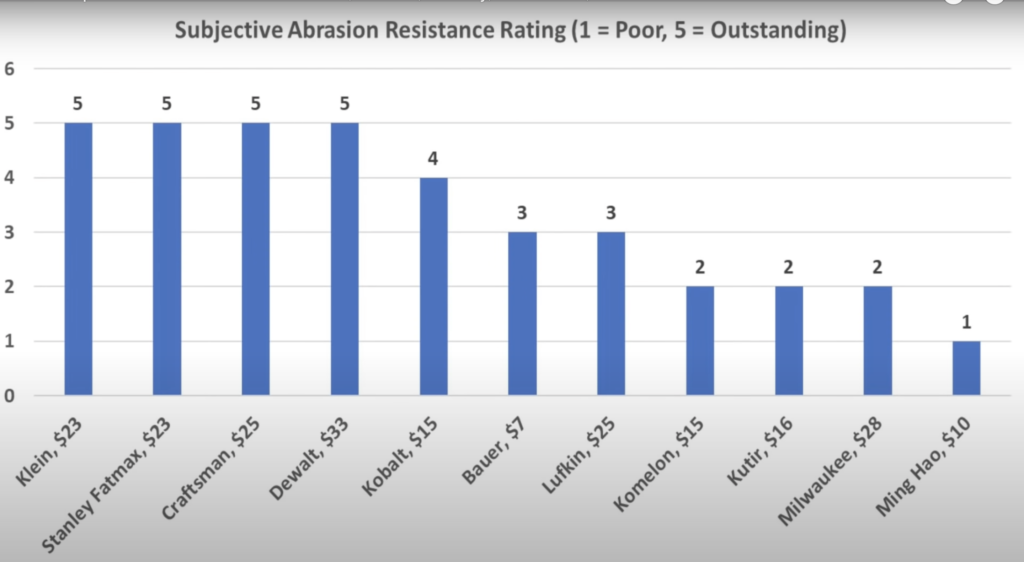
The DeWalt hook is secured in three locations, made in the USA with global materials; DeWalt claims 13 feet or 156 inches of standout. Next, DeWalt was shy an inch and a half of reaching 156 inches. So the Klein tools brand came out on top at 167.5 inches, DeWalt second at 154.5 Craftsman, 154 Lufkin, 132 in Stanley fifth at 127.5.
Most tape measures say to have a protective surface coating on the blade to help to protect it. Next, which brand offers the best protection using this test jig? The test jig is set up with 800 grit, wet sandpaper, and it’s wrapped around a one-inch diameter PVC pipe to keep the sandpaper from becoming clogged.
I’ll spray water on the tape and the sandpaper. Next, I applied 10 pounds of force on the edge of the test rig arm to apply consistent pressure. Each brand will make a total of 60 passes across the sandpaper.
It begins with the Bauer brand. After ten passes, then nine, Bauer is still in great shape. Let’s give the Baer 50 more passes. The Bauer did pretty well, with a couple of areas where it did wear through, but other than that, the numbers are very readable testing the Ming Hao; how I’ll be replacing the sandpaper between each test after only ten passes with the Ming Hao, how the numbers are completely worn off.
So let’s continue for another 50 tokens to see how it holds up. Wow, that’s a lot of damage compared to the Bauer brand. The Ming Hao could have held up better. Testing the Kobalt and the sandpaper isn’t causing any damage. Wow, there’s a vast difference between the Ming Hao How and the Kobalt; the numbers on the Kobalt are slightly faded, but they’re still straightforward to read.
During the test, I could tell that the friction or drag of the tape passing across the sandpaper was much more than with the Bauer. Kobalt did better than Ming Hao.
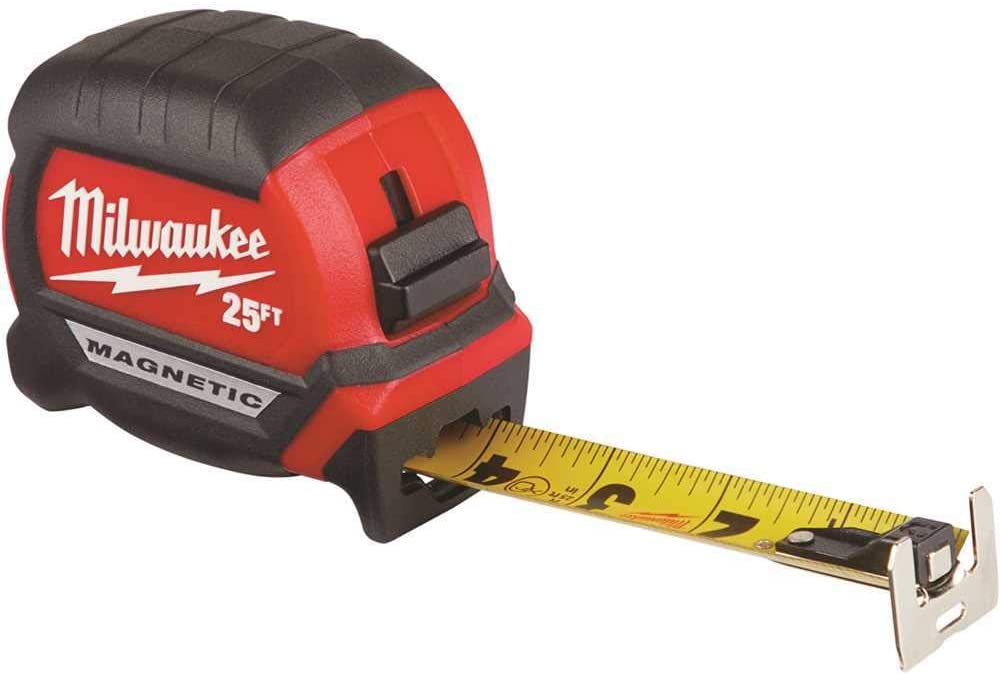
How, but better than the Bauer. They are testing the Kutir brand. There’s a lot of resistance to the tape moving across the sandpaper with the Kutir brand. Unfortunately, there’s a lot of damage with the Kutir brand, but better than the Ming Hao. Now testing the Klein tools per brand, the Klein is sliding across the sandpaper effortlessly.
There doesn’t appear to be any fading with the Klein tools brand. They are testing the Stanley Fat Max. The Stanley Fat Max held up very well and looks as good as new. Trying the Craftsman, the Craftsman brand is moving across the sandpaper just as freely as the Stanley Fat Max and the Klein tools brand.
Even before the test, the numbers on the Craftsman look faded, but in fact, they are not. This part of the tape measure was not sanded. And this part of the tape measure was, and as you could tell, there isn’t any visible difference. They are testing the Lufkin brand.
Unfortunately, there’s quite a bit of damage to the Lufkin brand. It wore right through the paint in several areas. So the coat used on Lufkin isn’t as good as some other brands. Testing Milwaukee, unfortunately, the Milwaukee brand did not hold up very there’s quite a bit of fading, and some of the numbers could be easier to read.
Testing DeWalt, there’s no fading with the numbers, and the De Walt looks as good as new wear resistance is very subjective. So I put together a rating scale of one through five; a rating of one indicates feeble abrasion resistance, while a rating of five indicates outstanding abrasion resistance.
The difference among the brands is somewhat surprising, with the Klein tools, Craftsman, and DeWalt receiving a perfect five rating, but the Kobalt performed nearly as well with a four. Unfortunately, some of the more expensive brands did not perform very well.

Industrial environments can be hazardous for tape measures. Let’s see how these tape measures hold up after five minutes inside. The ammo can shake with concrete dust, sand, and drywall screws. Before we beat up the steps, let’s go ahead and get our 12-foot rec12-foot for each brand.
And then we’ll see how they perform after five minutes inside the ammo can. To prevent damage to the tape measure. I’ll tape a couple of earplugs to the tape to serve as a cushion and help prevent injury.
Testing the Bauer, I tried the Bauer twice. It took a right at 0.85 seconds each time. Let’s see how it performs after five minutes inside the ammo can. Okay, it’s been right at five minutes. So let’s see how the Bauer’s doing,
Wow, the Bauer looks pretty rough. Let’s test a recoil speed once again to see how it performs. And the barrel slowed down a little from 0.85 to 1.1 seconds. I slowed down the side-by-side video foot just a little, and the new tape measures on the left and is noticeably faster.
And the new Ming Hao averaged 1.05 seconds before five minutes inside the ammo can, and Ming Hao took nearly twice as long and stopped almost eight inches from fully retracting. And Kobalt is right at 0.8, five seconds. Both times after exposure to the sand and dust, it didn’t seem to bother the Kobalt too much.
It slowed down slightly from 0.8, five to 09. Very impressive. The Komelon is correct at 1.16 seconds. Both times the exposure to sand and dust only slowed it down slightly from 1.16 to 1.36 seconds.

The Kutir brand averages 1.8 seconds. The sand and dirt caused many problems with the Kutir brand, and it stopped around five feet short of fully retracting. Both times the Klein tools brand is right at one second.
Both times the client tools brand slowed down quite a bit to 1.87 seconds after exposure to the sand. The Stanley Fat Max is right at 1.6 seconds. Both times the sand of the desk, you only slowed it down slightly to 1.76 seconds, just like the Stanley.
The Craftsman is right at 1.6 seconds. Both times. It also slowed down slightly from 1.6 to 1.97 seconds. The new Lufkin was a bit faster than the Craftsman and the Stanley at 1.4 seconds; the sand and dust hardly bothered the Lufkin, only slowing it down slightly from 1.4 to 1.5 seconds—1.2 seconds on average for Milwaukee, which is somewhat faster than the Lufkin.
A lot of sand and dust entered Milwaukee through the giant hole for the finger stop. And it hurt the Milwaukee 1.16 seconds both times for the new DeWalt, which is slightly faster than the unknown Milwaukee.
It was just as quickly after exposure to Santa dust at 1.6 seconds. Very impressive. The tape measure that performed the best in a simulated work environment is the DeWalt, which maintained its retraction speed after exposure to sand and dust; the Kobalt and the Lufkin tied for second, only losing 6% of their original retraction speed Stanley Fat Max did well at 9% in Komelon 15.
Unfortunately, several other brands couldn’t fully retract after exposure to sand. If you’re using a tape measure for metalwork or even in home construction, having a tape measure with a magnet on the hook might be helpful.
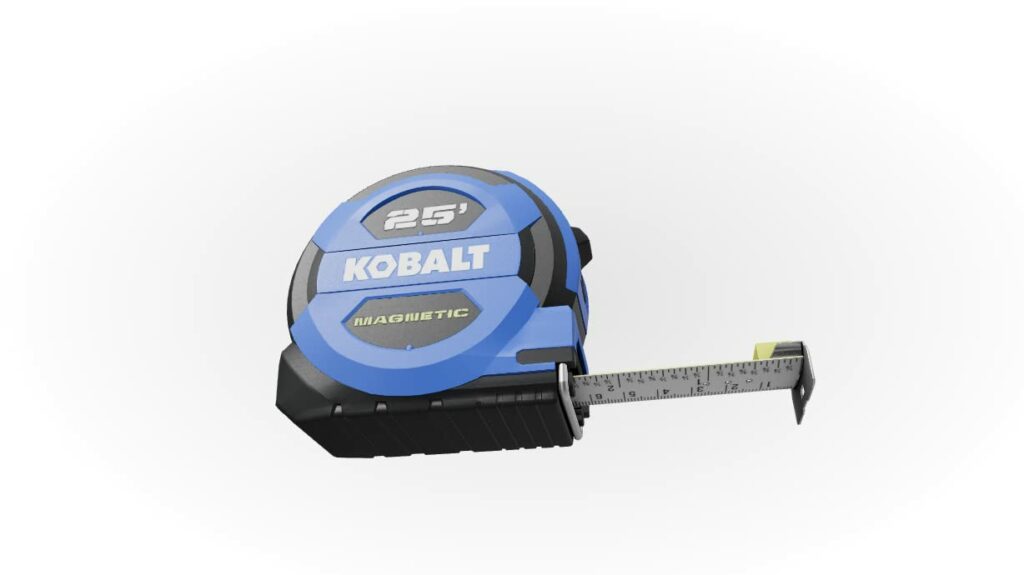
The magnet should be strong enough to hold the tape onto the metal. At the same time, the tape measure is extended to a total of 25 feet. So let’s see how they stick to this half-inch by three-inch mild steel. The Ming Hao uses a two-magnet setup.
I made several attempts. So the Ming Hao could only hold for 17 feet and three inches. And the Kobalt has just one large magnet in the center, and it held while the tape measure extended the total 25 feet.—the rest of the brands with appeals held for 25 feet of extension.
However, some of the two magnet setups required multiple attempts to complete the job. The tape disconnected if I didn’t provide a straight pull. To quantify the magnet’s strength, let’s measure just how much power each magnet has before it detaches from the metal, beginning with the Ming Hao brand; unfortunately, Ming Hao how didn’t have enough strength to move the weight scale off of zero.
The Kobalt has just one magnet and did much better at three pounds. The Komelon has two magnets, maxing out at 1.6 pounds. The Kutir has two magnets and performed better than the Komelon at 2.6 pounds.
The client tools brand has one magnet and did the best yet. At 3.8 pounds, the Stanley Fat Max has just one magnet and barely beats the client tools at four pounds. The Craftsman has just one magnet and did the best yet at 4.8 pounds; even though Milwaukee has just one interest, unfortunately, it struggled at just two pounds.
So the Craftsman came out on top at 4.8 pounds, Stanley four Klein, 3.8 Kobalt three Kutir, 2.6, and Milwaukee two pounds. So five of the six top brands have just one magnet. I went ahead and tested all the tape measures for accuracy.
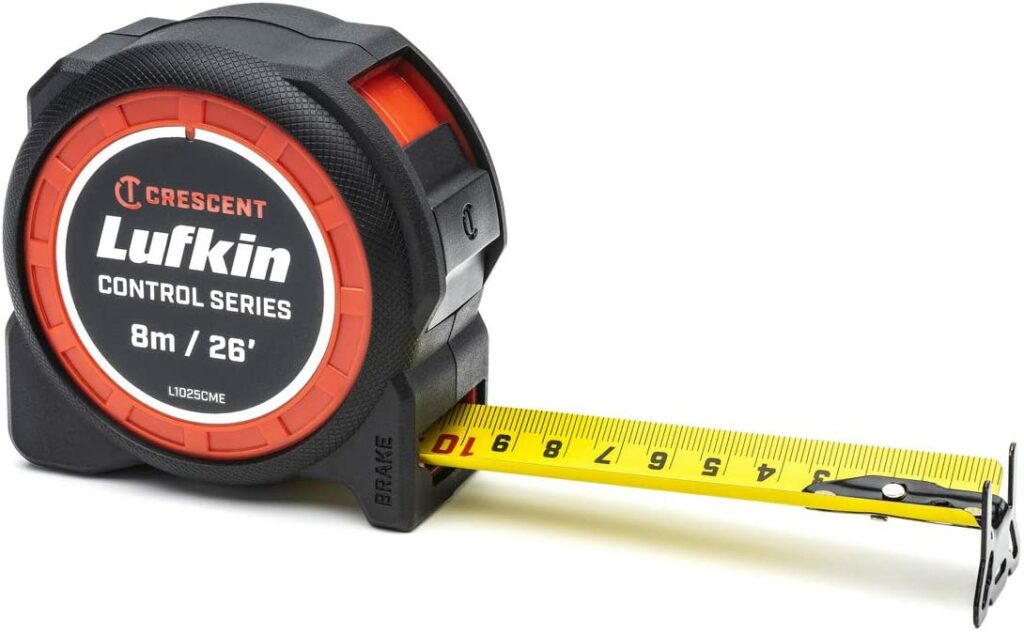
The hook on the tape measure is supposed to slide back and forth the curve’s width. If you push the end of a tape measure against an object, the theme should slide inward the width of the hook. So the first-inch measurement is accurate. If the hook is placed over the end of an object, the tape measure slides outward.
All the tape measures were close enough to perfect, except for the brand. I tested three tapes made by Kutir, and they were all off by approximately one 32nd an inch. Some belt clip designs are good, while others don’t seem to be designed too well.
Looking at the Kutir brand, there must be a more significant gap between the leading edge of the belt clip and the tape measure. Also, the front of the tape measure sticks out quite a bit, making it difficult to slide the belt clip onto the belt.
The belt clip design is very subjective for clipping into a belt. The DeWalt seems to have the best; the Kobalt Stanley Klein tools, Milwaukee Lufkin, and Craftsmen are all four out of five.
Once the tape measures clipped onto a belt, it must stay in place using an inch-and-a-half belt. Let’s see how much lifting force it takes to remove the tape measure from the belt. The Bauer brand has a small bump-out that keeps the tape measure secure unless you pull it outwards so that you can remove it without force.
I’ve torn to weight scale to include the weighted clamp, pulling it straight up. It took 14.8 pounds to remove the Bauer testing, the Ming Hao how 6.2 pounds to the Ming Hao how to brand the Kobalt did the best yet at 21.8 pounds, only 3.6 pounds to remove the Kutir, and they did it slightly better than the Kalon, at 4.8 pounds.
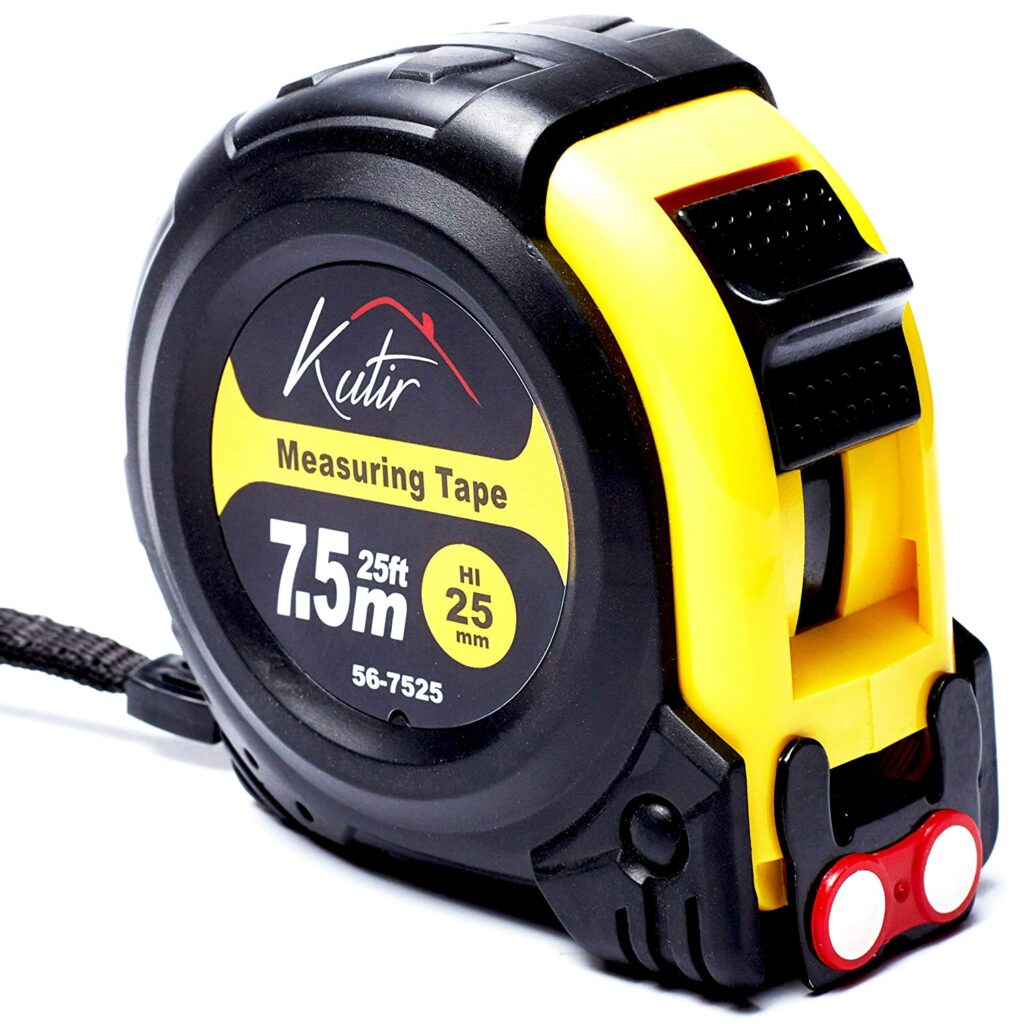
And the Klein tool was released from the belt at 5.8 pounds, and a Stanley Fat Max let go at right at six pounds, 8.2 pounds for the Craftsmen. So Kobalt is still in the lead, and the Lufkin performed very well at 11.4 pounds, the Milwaukee released at eight pounds, and the DeWalt performed well at 14.6 pounds.
So the Kobalt maintained the strongest hold on the belt at 21.8 pounds, Bauer second at 14.8, DeWalt at 14.6, Lufkin at 11.,4, and a Craftsman at 8.2. The tapes were also tested for blade lock strength. The DeWalt came in at 12.4 pounds, Milwaukee at 9.8 Craftsman, 7.8 Kobalt at 4.2, and Koat at melon and Klein tools at 3.6. For marketing purposes.
Some brands mention impact resistance and survival from a drop. F. F. I’ll attach a one-pound PVC pipe to each tape measure for this test to direct the impact point to the most vulnerable pare.
All the tape measures were dropped from right at 12 feet, while the barrel doesn’t seem to have damage on the surface. Unfortunately, the blade locks no longer work. The blade lock button on the Ming How has been broken. Unfortunately, the case on the Kobalt has been broken.
The hook has also been bent beyond a few scratches on the outside. The Komelon held up just fine. Unfortunately, Kutir’s blade lock button has been badly damaged.
The hook was also bent during the impact. The Klein tools brand held up reasonably well, but unfortunately, the theme became bent with just a few scratches on the outside of the tape measure; the Craftsman still functions properly, but the theme has been bent.
The left can hold up reasonably well, but unfortunately, the hook has bent. Besides a few abrasions and no damage to the Milwaukee, the Milwaukee tape measure held up well.
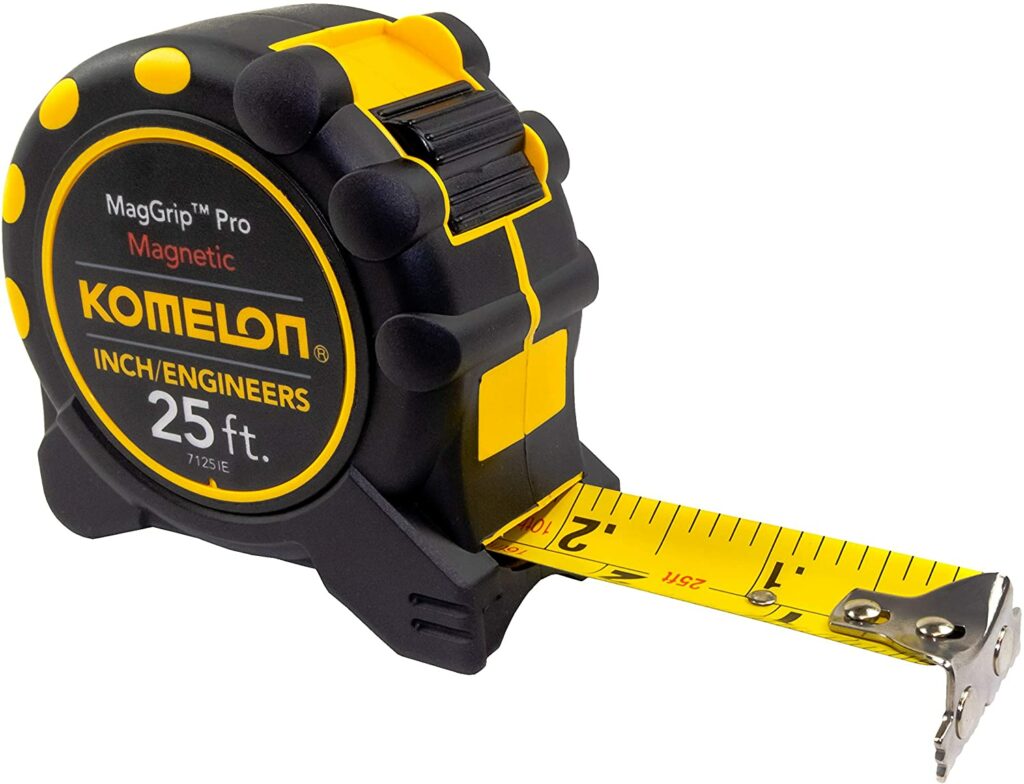


Leave a Reply